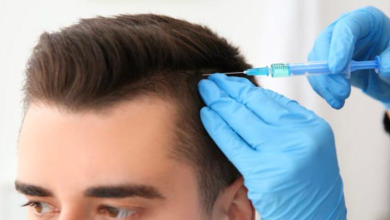Hormone Replacement Therapy: Navigating a Path to Hormonal Balance

Hormone Replacement Therapy (HRT) is a medical treatment designed to restore hormonal balance within the body. This therapy primarily benefits individuals whose hormone levels have become imbalanced due to aging, health conditions, or other factors. Understanding the nuances of hormone replacement therapy, its applications, and potential benefits is essential for those considering this treatment.
Understanding Hormonal Imbalance
Hormones play a fundamental role in regulating various bodily functions. As we age, hormone levels can fluctuate, leading to imbalances that may result in a range of symptoms and health issues. These imbalances can affect both men and women, although they are more commonly associated with menopause in women and andropause in men.
Menopause and Hormone Replacement
Menopause is a natural stage in a woman’s life that typically occurs in her late 40s or early 50s. During this phase, the body experiences decreased estrogen and progesterone production, leading to symptoms such as hot flashes, mood swings, and bone density loss. Hormone Replacement Therapy can help alleviate these symptoms by restoring hormonal balance.
Andropause and Hormone Replacement
Andropause, also known as male menopause, is a similar hormonal shift that occurs in men as they age. Testosterone levels gradually decline, leading to symptoms like fatigue, reduced muscle mass, and mood changes. HRT can be a viable solution for men experiencing these symptoms, helping to restore testosterone to healthier levels.
The Benefits of HRT
Hormone Replacement Therapy offers a range of potential benefits. For women going through menopause, it can help alleviate symptoms such as hot flashes, night sweats, and mood swings. HRT may lead to increased energy, muscle mass, and improved mood in men. Additionally, HRT may help maintain bone density in both men and women.
Personalized Treatment
One of the key aspects of HRT is that it can be tailored to the specific needs of each individual. Healthcare professionals work closely with patients to determine the most appropriate hormone levels and delivery methods, ensuring that the treatment aligns with the patient’s unique situation and goals.
Balancing Risks and Benefits
Like any medical treatment, HRT carries potential risks and benefits. For women, it may slightly increase the risk of conditions like breast cancer and blood clots, while in men, it could lead to issues like prostate enlargement. Careful consideration and thorough discussions with healthcare providers are essential to weigh these risks against the potential benefits.
Delivery Methods
HRT can be administered in various ways, depending on individual preferences and medical considerations. For women, hormone replacement can come in the form of pills, patches, creams, or even injections. Men may receive testosterone replacement through injections, gels, or implantable pellets.
Regular Monitoring
Proper monitoring is a crucial aspect of Hormone Replacement Therapy. Healthcare providers closely track hormone levels to ensure they remain within the target range. This ongoing monitoring allows for adjustments to treatment plans as needed to maintain optimal balance.
Considering Alternative Approaches
HRT is not the only option for addressing hormonal imbalances. Lifestyle changes, dietary modifications, and herbal remedies may offer alternatives or complementary approaches to hormonal health. These approaches should be discussed with healthcare providers to determine the most appropriate course of action.
Conclusion
Hormone Replacement Therapy is a valuable medical treatment for individuals experiencing hormonal imbalances. Whether addressing menopausal symptoms in women or andropause-related issues in men, HRT offers the potential for symptom relief and improved quality of life. However, like any medical intervention, it should be approached carefully and under the guidance of knowledgeable healthcare professionals who can customize treatment to individual needs.
Read Also : Hormone Replacement Therapy: Navigating a Path to Hormonal Balance




